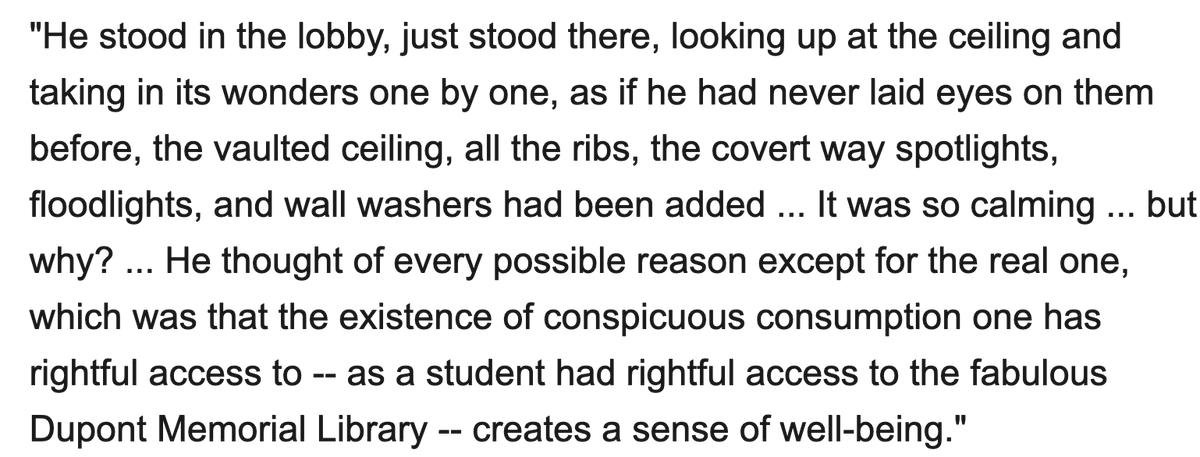In contrast, the 1963 Orange Government Center in Goshen, NY by Paul Rudolph: Tentacle Porn Brutalism 

Philadelphia City Hall, 1894: looks like the grandest possible set for a grand opera. (It's so big that that you can't tell that the statue of William Penn on top is 36 feet tall.) 

Thom Mayne's 2005 federal building in San Francisco. Starchitect Mayne is secretly an anti-government extremist who designs ugly and misanthropic government buildings because he hates bureaucrats and wants them to suffer from 9 to 5 every day of the work week. 

Tom Wolfe described the lobby of the 1915 San Francisco City Hall as "this Golden Whore’s Dream of Paradise...it’s like some Central American opera house ... a veritable angels’ choir of gold … and all kept polished as if for the commemoration of the Generalissimo’s birthday." 

The 7 Ugliest Government Buildings In Washington, D.C.
buzzfeednews.com/article/bennyj… via @bennyjohnson
buzzfeednews.com/article/bennyj… via @bennyjohnson
And from before the 1945 dividing line, there's the 1929 Santa Barbara County Courthouse, where being tried by a jury of your peers would at least be an aesthetic delight: 

Many of the best buildings in America were commissioned during the Roaring Twenties, when money, high spirits, and (surprisingly) good taste, were abundant, although some, like Buffalo's stupendous city hall, weren't finished until after the Crash of 1929.
Analogously, here's a 1928 golf course, Cypress Point on the on the Monterey Peninsula. It took American golf course architects a couple of generations after the 1929 stock market crash to do anything quite like that again: 

St. Charles Borromeo, the 1959 Roman Catholic-style Roman Catholic church in North Hollywood, CA. In contrast to St. Francis de Sales, this church was paid for by Bing Crosby and Mrs. Bob Hope, and they got what they wanted rather than what was in style at the time. 

Here's a rare transitional city hall from between the stock market crash of 1929 and 1945: Santa Monica's from 1938. It's far more austere than Roaring 20s city halls like Pasadena's and Beverly Hills', but it's still dignified and nicely detailed. 

By the middle of the 20th Century, most of the great buildings of the past were grimy with coal soot. It seemed easier to knock them down and put up something clean and lean than to try to wash their complicated moldings.
But in 1963, De Gaulle's Culture Minister Andre Malraux had grimy Notre Dame blasted with high pressure hoses ... and it came out looking wonderful.
Over time people started to appreciate more their once again sparkling old buildings.
Over time people started to appreciate more their once again sparkling old buildings.
To carry on with city halls from upscale Southern California towns over the decades, here's the 2008 Calabasas Civic Center, which looks like a more restrained version of 1920s Spanish Mission Revival: 

Palm Springs City Hall, 1952. It's celebrated for coming up with a few Modernist adaptations suitable for a hot climate, although the Spanish and Arabs had done it better centuries before: 

San Diego's four city halls over the generations:
unz.com/isteve/1945-as…
The 1874 city hall in San Diego's popular Gaslamp District:
unz.com/isteve/1945-as…
The 1874 city hall in San Diego's popular Gaslamp District:

Here's San Diego's second city hall, built by the Works Progress Administration in 1938: streamlined but impressive. It's now the San Diego County Administration building. 

In contrast, it's hard to find online a photo of San Diego's third and current city hall, which opened in 1964. I think this is it. It looks like worker housing in Sao Paulo. 

San Diego has been talking for a decade about replacing its boring 1964 modernist skyscraper city hall. Here's one high-budget plan: a lot of Thom Mayne random folderol, but the basic idea of making it the shape of a sailboat's sail is pleasant, at least from the outside. 

And here's the blue Apple Store 2020 city hall in Long Beach, CA that replaced the 1976 city hall (above). 

All this isn't to say that it's impossible for a talented-enough architect to create something beautiful in just about any style. But the headwinds began blowing against achieving beauty with the 1929 stock market crash and turned into a gale by 1945.
For example, here's Richard Meier's 2016 San Jose, CA city hall, which has been Thom Mayneized-Richard Gehryized with what looks like lots of chain link fencing attached at random to the outside: 

The 2016 San Jose, CA city hall by Richard Meier includes as part of its complex a separate planetarium-like dome out in front of the main building for weddings and the like: 

But I'm guessing that San Jose's 2016 po-mo City Hall lags behind San Francisco's astonishing 1915 beaux arts city hall for wedding photography: 

An academic looking for a topic for a paper could research the costs of weddings in the various city halls of a metro area by style of architecture.
Here's Tom Wolfe's 1970 description of the interior of the San Francisco City Hall from "Mau-Mauing the Flak-Catchers:" 

And here's Tom Wolfe's 2003 summary of why he likes conspicuous consumption in architecture from "I Am Charlotte Simmons:" 

Not so many people seem to want to bask in the radiance of the 1987 New Zealand National Library in Wellington, a mid-budget knockoff of the Boston City Hall 

"The best city hall and courthouse wedding venues around LA:"
1. Pasadena City Hall - 1927
2. Old Orange County Courthouse - 1904
3. Calabasas City Hall - 2008
4. Santa Barbara Courthouse - 1927
5. Riverside County Courthouse - 1901
timeout.com/los-angeles/th…
1. Pasadena City Hall - 1927
2. Old Orange County Courthouse - 1904
3. Calabasas City Hall - 2008
4. Santa Barbara Courthouse - 1927
5. Riverside County Courthouse - 1901
timeout.com/los-angeles/th…
• • •
Missing some Tweet in this thread? You can try to
force a refresh















